From their storied pasts to volcanic eruptions, there's plenty to be discovered around the mighty Cascade Range. Situated in Southwest Washington, Vancouver is surrounded by the impressive sights of Mount Hood, Mount St. Helens, and Mount Adams. Each nearby summit offers unique breathtaking views and exciting opportunities to explore while admiring the sweeping natural landscapes found only in the Pacific Northwest. Discover more about these mountains below and head out on your next adventure!
Getting To Know the Cascades – The Basics
Mount Hood is the largest mountain in Oregon coming in at 11,249 feet, and overlooks the city of Portland, making it a popular destination for year-round recreation. Though the city of Portland may sit at the mountain’s doorsteps, perhaps some of the most scenic views of Hood can be seen from the north shore of the Columbia River in Vancouver. Whether it’s crossing the Interstate 205 Bridge, strolling along the Columbia River Waterfront Renaissance Trail, or exploring Fort Vancouver National Historic Site, Mount Hood is a frequent backdrop around Vancouver.
Find the Best Views at: Wintler Park, Salmon Creek Greenway Trail, Vancouver Waterfront

Known for its massive eruption which seized the world’s attention in 1980, Washington’s Mount St. Helens is just an hour and a half drive northeast of Vancouver. The famous mountain is hard to overlook with its missing peak and large crater. In just over 40 years since its eruption though, the land around the blast zone has bounced back with a resurgence of natural beauty and new activities to enjoy during every season. The volcanic vistas have even inspired popular brewers like Loowit Brewing Company to celebrate their Pacific Northwest roots and connection to the volcano.
Find the Best Views at: Vancouver Lake, Washington State University’s Vancouver campus

Settled just beyond the Columbia River Gorge, Mount Adams might be small when viewed from Vancouver, but it is the second-highest mountain in Washington. Though sometimes referred to as “the forgotten mountain,” visitors can find themselves surrounded by the vast beauty and a plethora of outdoor activities with fewer crowds. Located in the eastern portions of Gifford Pinchot National Forest, adventurers can seek out parts of the Pacific Crest Trail (PCT), scenic lakes, and more!
Find the Best Views: On the Columbia River, Vancouver Frenchman’s Bar, and Tri-Mountain Golf Course.
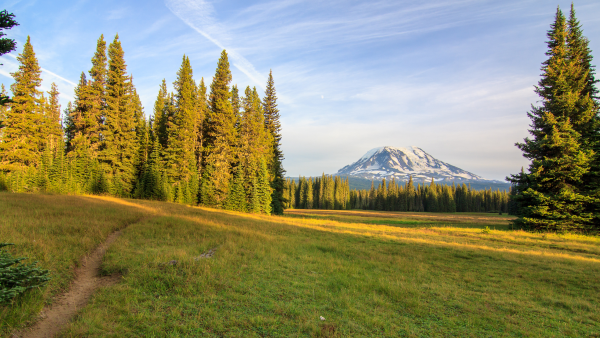
Other notable mountains you might glimpse from afar while in Vancouver include Mount Rainier and Mount Jefferson.
Guardians of the Columbia
Mount Hood, Mount St. Helens, and Mount Adams have been part of the northwest landscape for centuries. Native Americans living in the area have passed down stories of the region for generations, contributing to a rich tradition of oral history and myth. There is one tale, in particular, told variously by tribes, which refers to an ancient land bridge (Bridge of the Gods) and the surrounding mountains. The stories below were gathered by Oregon State University.
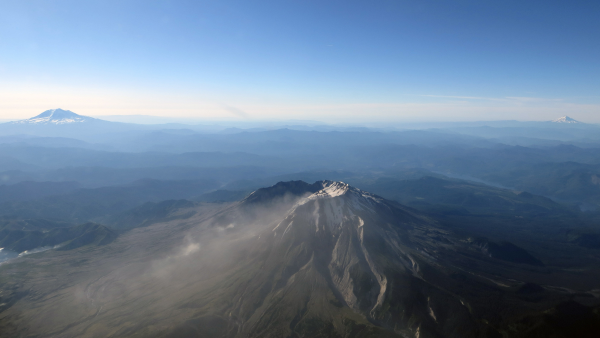
From the Puyallup Tribes: According to the lore of these tribes, long ago a huge landslide of rocks roared into the Columbia River near Cascade Locks and eventually formed a natural stone bridge that spanned the river. The bridge came to be called Tamanawas Bridge, or Bridge of the Gods. In the center of the arch burned the only fire in the world, so of course, the site was sacred to Native Americans. They came from north, south, west, and east to get embers for their own fires from the sacred fire.
A wrinkled old woman, Loowitlatkla ("Lady of Fire,") lived in the center of the arch, tending the fire. Loowit, as she was called, was so faithful in her task, and so kind to the Indians who came for fire, that she was noticed by the great chief Tyee Sahale. He had a gift he had given to very few others—among them his sons Klickitat and Wyeast—and he decided to offer this gift to Loowit as well. The gift he bestowed on Loowit was eternal life. But Loowit wept because she did not want to live forever as an old woman.
Sahale could not take back the gift, but he told Loowit he could grant her one wish. Her wish, to be young and beautiful, was granted, and the fame of her wondrous beauty spread far and wide.
One day Wyeast came from the land of the Multnomahs in the south to see Loowit. Just as he arrived at Tamanawas Bridge, his brother Klickitat came thundering down from the north. Both brothers fell in love with Loowit, but she could not choose between them. Klickitat and Wyeast had a tremendous fight. They burned villages. Whole forests disappeared in flames.
Sahale watched all of this fury and became very angry. He frowned. He smote Tamanawas Bridge, and it fell into the river where it still boils in angry protest. He smote the three lovers, too; but, even as he punished them, he loved them. So, where each lover fell, he raised up a mighty mountain. Because Loowit was beautiful her mountain (St. Helens) was a symmetrical cone, dazzling white. Wyeast's mountain (Mount Hood) still lifts his head in pride. Klickitat, for all his rough ways, had a tender heart. As Mount Adams, he bends his head in sorrow, weeping to see the beautiful maiden Loowit wrapped in snow.
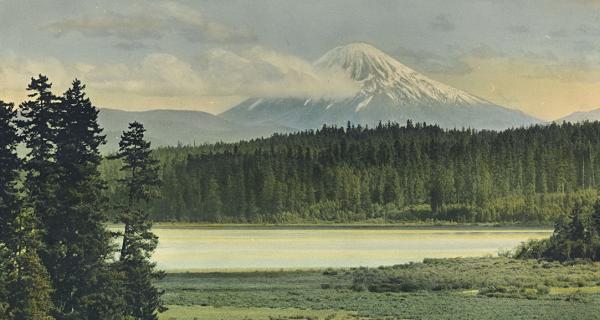
From the Yakima Tribes: Si Yett, meaning woman is the Yakima Indian name for Mount St. Helens. According to legend, Si Yett was a beautiful white maiden placed on earth by the Great Spirit to protect the Bridge of the Gods on the Columbia River from the battling brothers, Mount Adams and Mount Hood.
From the Klickitat Tribes: The Klickitat tell of two braves, Pahto, (Mount Adams) and Wyeast (Mount Hood), who fought to win the affections of an ugly old hag, who had been turned into a beautiful maiden by the Great Spirit.
From the Cowlitz Tribes: Cowlitz legends tell of a time when Mount Rainier had an argument with his two wives, Mount St. Helens, and Mount Adams. Mount St. Helens became jealous, blew her top, and knocked the head off Mount Rainier.
(The Cowlitz called Mount St. Helens "Lavelatla," which means "smoking mountain.")
Today, visitors to the Columbia River Gorge can cross the modern-day version of the Bridge of the Gods—a steel truss cantilever bridge that spans the Columbia River between Cascade Locks, Oregon, and near North Bonneville, Washington. The Bridge of the Gods also serves as the link for PCT hikers to cross between Oregon and Washington on their journey.
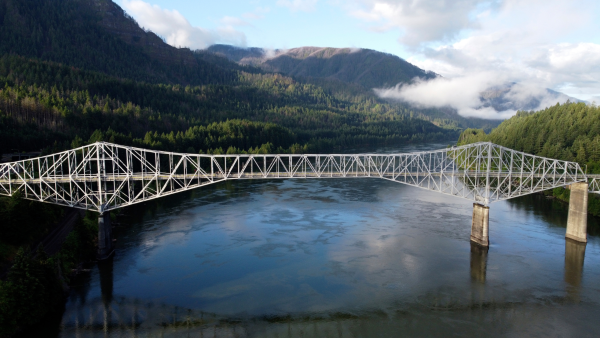
Where to Find the Best Mountain Views
The view from Silver Star Mountain has been called one of the best in the Pacific Northwest, with wildflowers and meadows in the spring to summer seasons and beautiful colors of fall foliage in the latter half of the year. There’s no wrong way to climb but taking Ed’s Trail provides the most scenic route for reaching the summit. On a clear day, you’ll be rewarded at the peak with views in all directions, including vistas of Mounts Rainier, St. Helens, Adams, Hood, and Jefferson, as well as the Pacific Ocean and nearby small towns below.
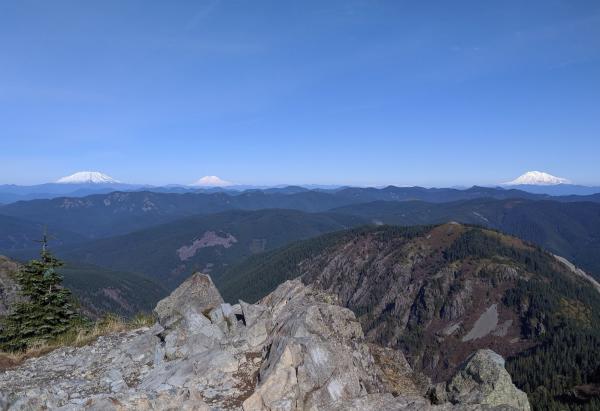
Information gathered from:
Native American Myths - Oregon State University, Port of Cascade Locks, Two States
